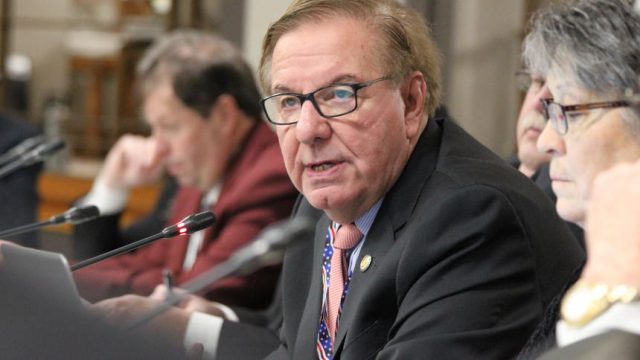State Lawmakers Should Be Wary of Their Own Revenue Forecast

In North Dakota, when the politicians are writing budgets, they aren’t spending money they have. They’re spending money revenue forecasts predict they’ll have.
The lawmakers and various executive branch leaders are, as I write this, down in Bismarck beginning the work of hashing out how to appropriate a two-year budget that will exceed $14 billion (including federal dollars).
As you can imagine, those revenue forecasts are pretty important. Yet, in recent years, the inaccuracy of those forecasts have been a major issue.
During the 2011 – 2013 budget cycle – which occurred in the middle of the oil boom – the forecast used by lawmakers to budget understated revenues by more than $1.7 billion. On the other side of the coin, going into the 2017 legislative session, I noted that the revenue forecast overstated revenues by more than a half billion.
“This is an exercise in what not to do and how not to run a forecast process,” UND economics professor David Flynn told me during the 2017 session (read more of his criticism here).
[mks_pullquote align=”right” width=”300″ size=”24″ bg_color=”#ffffff” txt_color=”#000000″]“This is an exercise in what not to do and how not to run a forecast process,” UND economics professor David Flynn told me during the 2017 session…[/mks_pullquote]
This matters, because how can lawmakers make sound budget decisions if they can’t rely on the forecast numbers?
The forecasts are typically done by the executive branch. Governor Doug Burgum, who was critical of the forecasting process during his 2016 campaign, has taken steps to address the issue by adding more data and more vetting to the process.
Things have improved. Per the latest numbers from the Office of Management and Budget, in the current biennium (which ends June 30) the forecast has only been off by about 6.4 percent. Still not perfect, but better than the billion dollar misses we’ve seen in past forecasts.
Anyway, given all these problems, the Legislature has sought to do their own forecasts. Which is something I’ve been supportive of. Forecasting revenues for a two-year budget cycle in a commodity-driven economy like North Dakota’s is not an easy task. Having more data points is a good thing.
Assuming they’re good data points.
Yesterday lawmakers released their own revenue forecast, and it doesn’t make any damn sense at all.
You can read the complete legislative forecast, conducted by IHS Markit, below but this comparison between the legislative (IHS) and executive branch forecasts put together by Legislative Council illustrates what I’m talking about (for the sake of comparison, here’s the Governor’s executive budget).
First, both forecasts make pretty much the same assumption about oil production, but the legislative forecast sees oil prices going much higher in the coming biennium…
…yet they predict that sales tax revenues will be more than a quarter billion dollars less than the executive forecast:
If there’s one thing we learned during the forecasting headaches of past budget cycles, it’s that sales tax collections track oil activity very closely. Higher oil prices mean more oil activity, which in turn means higher sales taxes. Past forecasts consistently understated sales tax collections when oil prices were high, and overstated them when prices fell.
You’d think we’d have learned that lesson, and yet that doesn’t seem apparent from the Legislature’s forecast. What’s more, despite a rosy view of oil prices, the Legislature’s forecast sees oil activity (as measured by well completions) actually falling. This chart is from page 22 of the IHS report below:
Are we really supposed to believe that significantly higher oil prices will manifest itself in fewer oil well completions? Because I’m pretty sure that’s not how it works.
And beyond this weird disconnect between oil prices, oil activity, and the sales tax is the fact that the IHS/legislative forecast says corporate income tax revenues (by $77.9M), individual income tax revenues (by $7.1M), and motor vehicle excise tax revenues (by $30.6M) will beat the executive branch forecast by $77.9 million, $7.1 million, and $30.6 million respectively.
Forget about the executive branch forecast. This IHS report doesn’t make sense when taken on its own, either because IHS just doesn’t understand enough about North Dakota’s economy or because somebody (maybe a politician) is getting cute with the forecast’s inputs.
Which is troubling, because the IHS numbers may well be what lawmakers use to write budgets.
“The Legislature will decide how much money we think we’ll have,” Senator Ray Holmberg, a Republican and chair of the Appropriations Committee, said yesterday when the IHS report was presented. “We just have to come up with a number we have to agree on.”
I hope lawmakers are skeptical of their own forecast, though given some of the hostility to Burgum’s budget which is palpable from certain legislative factions, I’m not sure we can count on that.
[scribd id=397051700 key=key-6Wz1UdIWSInEUDSQoVKP mode=scroll]







